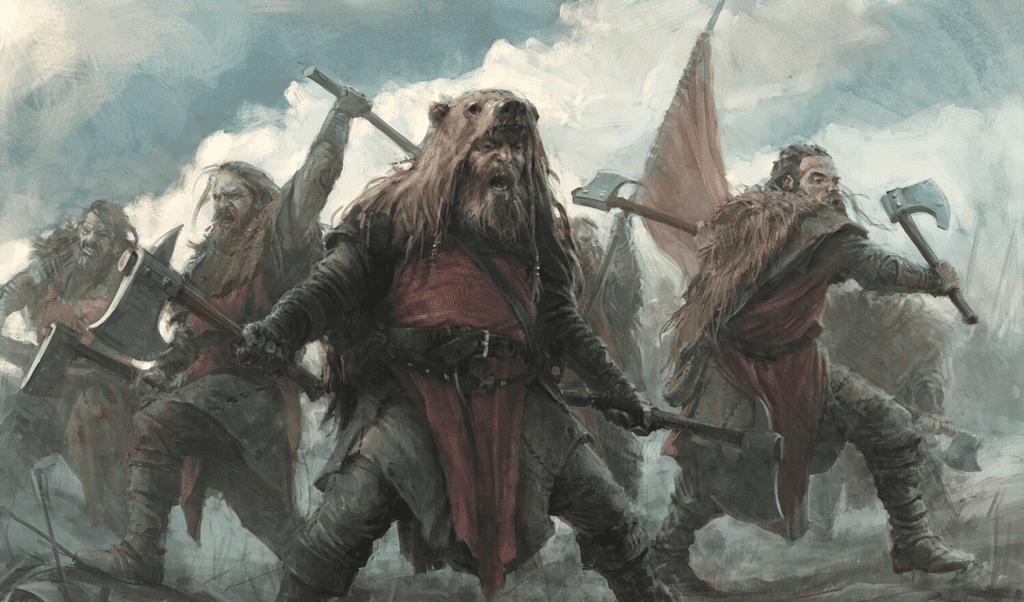While the Scandinavians were certainly more than just pagans, raiders, and warriors, their activities related to their incursions rightly form the core of our modern image of what a Viking War was. It was their remarkable successes in battle and piracy that set the Viking Age (approximately 793-1066 AD) apart from the periods that preceded and followed it.
Summary
Toggle
Medieval Europe was a rather violent place in all aspects, with raids and conquests that should be understood in the context of provoking cruel Viking wars. They did not occur in a “peaceful vacuum” but were rather part of the constant ebb and flow of medieval warfare. By the standards of their time, the Vikings were not exceptional for their savagery; in fact, they would have been exceptional if they had not been as savage.
Nevertheless, the Vikings were undoubtedly exceptionally good at what they did. During the Viking Age, Scandinavians came to occupy large swathes of Europe and plundered much of the rest. Their achievements were a source of both admiration and fear among other Europeans of the time. By the end of this article, you will understand why.
Why Did the Vikings Wage War ?

1) Was a Lack of Resources the Trigger for Viking Wars ?
Many theories have been proposed in an attempt to explain the massive outpouring of military exuberance from Scandinavia during the Viking Age.
Some have speculated that the Vikings lacked vital resources in their homelands and needed to expand abroad to secure necessities for survival, such as food and arable land. However, these demographic pressures did not exist in Scandinavia during the Viking Age, so this theory carries little weight.
Similarly, the idea that Viking raids were somehow motivated by religion is unconvincing – pagan reprisals for attempts to convert Scandinavia to Christianity. No missionaries – let alone Christianizing armies like those led by Charlemagne against the Saxons – were at work in Scandinavia until centuries after the first major waves of Viking raids. Even though the brunt of Norse raids disproportionately fell on monasteries and churches, this does not indicate a particular hostility towards Christianity on the part of the Vikings; rather, it simply reflects the fact that so much unprotected wealth was stored in monasteries and other religious centers.
2) The Vikings Sought Wealth

Instead, Viking wars seem to have begun for three reasons. The first two are closely related. Norse poets of the Viking Age tell us that desires for wealth and social standing were the primary motivations behind Viking military activities.
Modern historians agree that this self-image reflects reality. The Vikings, like virtually all peoples, both past and present, greatly valued wealth for themselves. They usually accepted tributes peacefully offered by their potential victims rather than engaging them in Viking battlefield, which shows they were truly after wealth, and the struggle was primarily a means to that end. This wealth was both portable (silver, gold, etc.) and non-portable (land).
The desire for wealth was closely tied to the desire for honor, prestige, and power. Viking warlords gained and bolstered their power by generously distributing their wealth to the warriors who fought for them in combat with their Scandinavian weapons, one of the most commonly used in close combat was the famous Viking knife crafted by artisans. Lords who had more wealth could afford to be more generous with their fighters, making them more loyal and encouraging new recruits to join the chieftain’s band. This increased the commander’s ability to win battles, which provided more plunder for him to dispense, and so on, in a self-perpetuating cycle. The chief and his warriors thus became more powerful and more honorable.
3) Adoption of New Viking Warships

A third factor that led the Scandinavians to begin conducting Viking wars across Europe in the late 8th century was the adoption of new types of ships. While the Scandinavians had always been a seafaring people due to the geography of their lands, it wasn’t until the 8th century that they began building sail-equipped ships. This improvement and other technological advancements made it more logistically feasible for captains and their followers to venture to distant lands in search of combat.
Viking Warfare Tactics : Scandinavian Raids

The typical strategy of the Vikings was to suddenly and without warning, appear in a:
- City: Paris, Seville,…
- Monastery: Lindisfarne
- Region: Mediterranean, Wessex, Northumbria, Normandy,…
They would then pillage (steal, rape, attack, kill, etc.) everything they could get their hands on swiftly and then disappear into their Viking ships and boats before local military forces could be rallied against them.
The Scandinavians Became More Ambitious
During the Viking Age, raids of this kind increased significantly. The early Viking conquests involved a handful of ships under the command of jarls with relatively modest power. However, as the power of the most successful leaders grew during the Viking Age, so did the scale on which they could wage war. Viking invasions in England – starting from the mid-9th century – sometimes involved hundreds of ships under the command of one or several leaders, who at this point would sometimes join forces to form even more formidable armies.

As the size and power of Viking armies grew, they became more ambitious. Initially, they would only raid during the summer and then return to Scandinavia to enjoy their loot by their own hearths. But in some cases, they ended up spending the winter in the lands they had plundered and created a Viking war camp. They would then conquer these lands, becoming permanent settlers.
Counterattacks by the Victims of Viking Wars
The peoples targeted by Viking raids were eventually able to repel them by adapting to their tactics: building fortified bridges to deny them battlefields and access to inland waterways, constructing ships to meet them in combat before they landed, and fortifying colonies more effectively.
Did the Norse people paint their faces before a Viking War ?

- There is little evidence to suggest that historical Norse individuals painted their faces when going to Viking warfare or besieging cities along the European coastlines.
- No relics of makeup, face paint, or war paint belonging to the Vikings have been discovered in modern times.
- Face painting and makeup were commonly used during that era, between the 8th and 11th centuries, but they primarily served for adorning oneself and enhancing one’s appeal in the eyes of others.
- Scandinavians, both men and women, maintained a neat appearance by taking weekly baths, daily hair brushing and combing, and using eye makeup with black kohl made from lead or charcoal.
Contemporary perceptions of Viking history are dominated by erroneous images of battles, warriors covered in war paint, and dirty, unkempt individuals. Now that you know the truth about Viking face painting habits and the tidy nature of the Vikings, you can help dispel these myths!
Viking Wars with Longships

A significant part of the success of Viking wars in England and the Scandinavian attack on Paris can be attributed to the technical superiority of their shipbuilding. Their ships proved to be highly fast and efficient. While their construction was not designed for Viking naval warfare, as Vikings rarely engaged in such battles, these long, narrow vessels could accommodate 50 to 60 sailors who powered the ship using oars, accompanied by Viking war chants and the beat of the Viking war drum to provide motivation and rhythm to the rowing. Let’s not forget the Viking war horn, which inspired warriors to perform at 120% in the upcoming battle. The Viking longship was capable of transporting substantial forces at high speed to land where it was advantageous.
Due to their shallow draft, Viking ships could dock directly on sandy beaches rather than in well-fortified ports. Viking ships allowed them to land practically anywhere along a coast and navigate rivers in England and on the continent, with Viking invasions (France, England) reported upstream on rivers such as the Seine and the Loire, the Thames, and many others. Vikings also sailed on the extensive river network in Eastern Europe, but they were more often involved in trade than raids.
Viking God of War : Tyr

Týr is the Scandinavian god of war, making him the Nordic equivalent of Kratos and Ares. He is alternately portrayed as the son of Odin (Prose Edda) or of Hymir (Poetic Edda). He is typically depicted as having only one hand, having lost the other to the wolf Fenrir. Although he is the Norse god of war, Týr is associated with Viking warfare and heroic glory in Norse mythology. Thus, he used his powers and abilities to make peace between races, rather than incite wars, unlike his Greek counterpart Ares, and later Kratos. He did not use his powers for selfish reasons like his fellow Aesir but for a higher purpose and with wisdom. In a way, this made him a god of Scandinavian war in name only. Týr enjoyed interacting with other cultures while gaining new perspectives, learning, and sharing knowledge and wisdom with them, unlike Odin, who hoarded knowledge, guarding it jealously. Due to his kindness, Týr accepted items from the places he visited. He kept all the gifts in his temple, probably to remember the wisdom and knowledge he had learned and shared.
A Cunning Norse God of War
Týr proved to be a very cunning and creative individual, as evidenced by the intricate traps found in his temple. Even Mimir, who is considered the wisest man in the world, was very impressed with how he ensured that the Aesir could not reach the realm of the giants and the knowledge he acquired.

